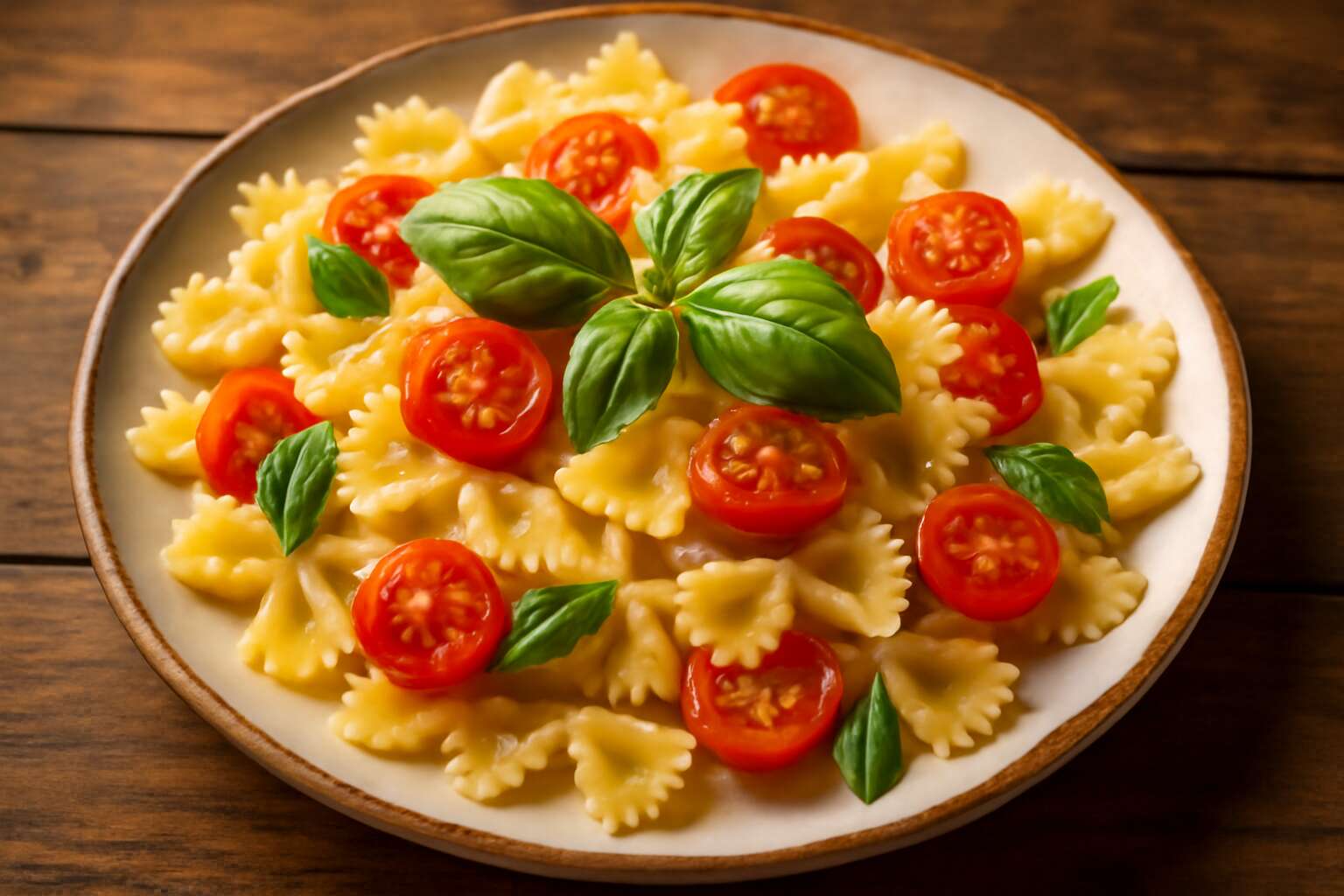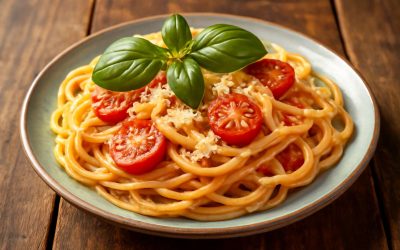The Rich Heritage of Italian Cuisine
Historical Roots of Italian Food
Few culinary traditions evoke the romantic tapestry of history quite like Italian food. Its roots stretch back over two millennia, entwined with the ancient civilizations that once flourished along the Mediterranean coast. From the humble peasant kitchens of rural Italy to the opulent tables of Renaissance courts, the essence of Italian cuisine is a living chronicle of cultural convergence and gastronomic ingenuity.
The rich heritage of Italian food is a testament to centuries of evolution, influenced by diverse peoples, climates, and landscapes. It’s a symphony of flavors—earthy, vibrant, and deeply rooted in tradition—that has transcended borders and time itself. Italian cuisine’s historical roots are woven into every pasta shape, every tomato sauce, and every aromatic herb, each telling a story of resilience, artistry, and unyielding passion.
As we explore the legacy of Italian food, it’s impossible not to marvel at its enduring appeal. Here’s a glimpse of the culinary treasures that define its historical roots:
- Ancient Roman culinary influences that introduced the concept of sauces and pasta.
- Medieval trade routes that brought spices, grains, and new ingredients to Italian tables.
- Regional variations shaped by geography, climate, and local customs, creating a mosaic of flavors across Italy.
Regional Culinary Traditions
Italy’s culinary landscape is a mosaic of regional traditions, each whispering tales of centuries-old customs and local ingenuity. It’s astonishing to consider that the diverse tapestry of italian food reflects not just geography, but a profound cultural dialogue that continues to evolve. From the sun-drenched coasts of Sicily to the snow-capped peaks of the Alps, every region contributes a unique flavor profile that enriches Italy’s gastronomic heritage.
For example, in Tuscany, hearty fare like ribollita and robust wines embody a rustic simplicity rooted in centuries of farming tradition. Conversely, in Naples, the birthplace of pizza, the emphasis on fresh, locally sourced ingredients and wood-fired ovens exemplifies a passionate pursuit of culinary perfection. This regional diversity is further accentuated by a historical interplay of trade and conquest, which introduced an array of spices, grains, and herbs that still define italian food today.
- Venetian cuisine’s love affair with seafood and delicate risottos.
- Sicilian dishes infused with Arab, Greek, and Spanish influences, creating a vibrant fusion of flavors.
- Emilia-Romagna’s reputation for rich pasta varieties like tortellini and lasagna, crafted with meticulous artistry.
Such variety demonstrates how deeply regional culinary traditions shape Italy’s identity, making every bite a journey through history and geography. Italian food isn’t merely sustenance; it’s a testament to the artistry of local communities that have preserved these flavors across generations, turning everyday ingredients into a cultural masterpiece.
Influences Shaping Italian Dishes
Italian food is a living testament to centuries of cultural exchange and culinary evolution. Each dish encapsulates a story—a story woven through trade routes, conquests, and migrations that introduced new spices, grains, and cooking techniques. The influence of Arab, Greek, and Spanish civilizations, for example, can be seen in the vibrant flavors of Sicilian cuisine, where citrus, olives, and aromatic herbs create a tapestry of taste that’s both complex and inviting.
Beyond the historical influences, Italian food is characterized by a meticulous dedication to ingredient quality and culinary craftsmanship. This unwavering focus transforms simple elements like fresh tomatoes or handmade pasta into gastronomic masterpieces. The artistry behind Italian dishes often involves elevating everyday ingredients into symbols of regional identity and pride. It’s this fusion of tradition and innovation that continues to shape the fascinating landscape of Italian cuisine, captivating palates across the globe.
Classic Italian Ingredients
Fresh Vegetables and Herbs
Imagine biting into a perfectly ripe tomato or fragrant basil leaf—these are the backbone of authentic italian food or. Fresh vegetables and herbs aren’t just ingredients; they’re the soul of every dish, infusing each bite with vibrant flavors and undeniable authenticity. In Italy, the emphasis on quality produce is almost a national sport, with markets bursting with colorful produce that seem to shout, “Eat me!”
For a true taste of Italy, it’s essential to choose ingredients that are in season and locally sourced, ensuring maximum flavor and freshness. Think plump cherry tomatoes, crisp bell peppers, and aromatic herbs like oregano, thyme, and rosemary. These components create a symphony of flavors that elevate simple pasta or risotto to culinary masterpieces. When it comes to italian food or, freshness reigns supreme—no shortcuts, no compromises!
- Fresh basil
- Parsley
- Sage
- Oregano
- Thyme
Mastering the art of italian food or begins with understanding that the best dishes rely on these humble, yet extraordinary ingredients. They transform everyday staples into something truly memorable—proof that sometimes, less is more when it comes to flavor.
Quality Olive Oils and Vinegars
Few ingredients elevate Italian food or to the realm of culinary artistry quite like quality olive oils and vinegars. Their rich, complex profiles are the silent poetry behind many timeless dishes, whispering stories of sun-drenched groves and ancient traditions. In Italy, the pursuit of the perfect extra virgin olive oil is akin to a sacred ritual—each drop embodies the essence of the land, cold-pressed and bursting with flavor. Similarly, aged balsamic vinegars, with their velvety texture and nuanced sweetness, are treasures that transform simple salads and grilled vegetables into symphonies of taste.
For an authentic experience, seek out artisanal varieties that boast provenance and craftsmanship. Consider these essential elements for your pantry:
- Extra virgin olive oil—robust and peppery, ideal for drizzling or finishing dishes.
- Balsamic vinegar—aged to perfection, adding depth and a touch of sweetness.
- Red wine vinegar—bright and tangy, perfect for dressings and marinades.
When paired with fresh herbs and vibrant vegetables, these classic Italian ingredients create a harmonious balance that captures the soul of Italian food or. They are the subtle catalysts that turn everyday ingredients into memorable culinary moments, where quality is always the star and simplicity reigns supreme.
Authentic Cheeses and Dairy Products
In the realm of authentic italian food or, few ingredients evoke the same sense of tradition and craftsmanship as cheese and dairy products. Italy’s rich culinary tapestry is woven with a variety of cheeses—each telling a story of regional terroirs and age-old techniques. From the creamy decadence of mozzarella di bufala to the sharp, crumbly allure of Pecorino Romano, these cheeses are the soul of countless dishes. Dairy products in Italy are often crafted with reverence, embodying centuries of artisanal mastery.
Consider the allure of aged Parmigiano-Reggiano, a cheese that matures for up to 36 months, developing complex umami flavors that elevate pasta, risotto, and even simple bruschetta. Fresh ricotta, with its delicate, fluffy texture, lends a gentle sweetness to desserts and stuffed pasta. To truly appreciate the depth of italian food or, seek out regional varieties that boast provenance and meticulous craftsmanship. These ingredients serve as the cornerstone of Italy’s culinary magic, transforming humble ingredients into gastronomic masterpieces.
Pasta and Grains
Few culinary traditions evoke a sense of timeless artistry quite like Italian food or. Beyond the vibrant sauces and aromatic herbs, the foundation lies in the essential pasta and grains that have sustained generations. Italian cuisine’s soul is embedded in its mastery of simple, yet profound ingredients like durum wheat semolina, which forms the basis of classic pasta varieties. These grains aren’t just filler; they are the canvas upon which Italian chefs craft their signature dishes.
There’s an almost meditative quality to the process of transforming these humble ingredients into gastronomic masterpieces. Whether it’s the delicate, thin strands of spaghetti or the hearty, textured gnocchi, each piece embodies centuries of tradition. To deepen your appreciation for authentic Italian food or, explore regional variations such as orecchiette from Puglia or trofie from Liguria, which highlight the unique terroirs of Italy. These pasta and grains are not merely sustenance but a testament to Italy’s unwavering commitment to culinary excellence.
Seafood and Meats
Italian food or, with its rich tapestry of flavors, owes much of its depth to the exquisite seafood and meats that adorn many traditional dishes. Italy’s extensive coastline provides an abundance of fresh, high-quality seafood—think tender calamari, succulent anchovies, and plump mussels—that brings a briny sweetness to pasta, risottos, and stews. These ingredients aren’t just add-ons; they are the very soul of seaside menus from Sicily to Liguria.
Meats also play a pivotal role in Italian cuisine, with cured options like prosciutto, salami, and pancetta adding layers of complexity and depth. In regions like Emilia-Romagna, slow-cooked pork and veal are staples, showcasing Italy’s mastery of hearty, yet refined, meat dishes. To truly appreciate Italian food or, explore the regional nuances, it’s impossible to overlook how seafood and meats elevate the culinary experience, transforming simple ingredients into culinary icons that reflect Italy’s diverse terroirs.
Popular Italian Dishes You Must Try
Pasta Classics
Italy’s culinary tapestry is woven with vibrant flavors and timeless allure, captivating palates worldwide. Among the crown jewels of italian food, pasta classics reign supreme—each dish a testament to centuries of tradition and artistry. From the silky ribbons of Tagliatelle al Ragù to the robust, comforting depths of Lasagna Bugliese, these dishes embody the soul of Italian cuisine.
There’s an almost poetic rhythm to the way these pasta dishes are crafted—simple ingredients elevated through technique and passion. Every bite tells a story of regional flavors and culinary innovation. For example, Spaghetti Carbonara, with its creamy sauce infused with pancetta and Pecorino Romano, offers a perfect harmony of richness and zest.
- Spaghetti Carbonara
- Penne all’Arrabbiata
- Fettuccine Alfredo
These pasta classics are more than mere comfort foods—they are living art, inviting you to savor the very essence of italian food in each mouthful.
Pizza Varieties
Italian food is a symphony of flavors that beckons the senses with its rich history and vibrant personality. Among its most beloved expressions are the diverse pizza varieties that have become symbols of Italian culinary artistry. Each pizza, from the classic Margherita to the inventive Quattro Stagioni, embodies regional creativity and a mastery of dough, sauce, and toppings.
The beauty of Italian food lies in its versatility, and pizza exemplifies this with endless possibilities. For instance, Neapolitan pizza’s thin, charred crust and simple toppings reflect centuries-old traditions, while Roman-style pizza offers a crisp, rectangular alternative favored for its portability and bold flavors.
- Margherita – a delicate balance of tomato, mozzarella, basil, and olive oil
- Quattro Stagioni – a harmonious blend of artichokes, ham, mushrooms, and olives
- Focaccia – a soft, savory bread often topped with rosemary and sea salt
Each variety serves as a testament to Italy’s innovative spirit and dedication to culinary excellence. When exploring Italian food, the array of pizza options offers an immersive journey into regional tastes and artisanal craftsmanship that continues to enchant palates worldwide.
Other Iconic Dishes
Italian food is a culinary journey that promises more than just pasta and pizza; it’s an exploration of bold flavors and time-honored traditions. Beyond the well-known dishes, Italy boasts a treasure trove of iconic dishes that captivate the palate and reveal the country’s rich culinary diversity.
One such dish is Osso Buco, a hearty braised veal shank simmered with vegetables, white wine, and herbs, offering a taste of Northern Italy’s rustic charm. Another must-try is Risotto alla Milanese, a creamy rice dish infused with saffron, showcasing Italy’s mastery of grains and vibrant flavors.
For seafood lovers, Spaghetti alle Vongole — spaghetti tossed with fresh clams, garlic, and olive oil — embodies the coastal essence of Italian food. These dishes, along with others like Saltimbocca and Caponata, form a tapestry of tastes that beckon culinary enthusiasts to delve deeper into Italy’s gastronomic heritage.
Each dish reveals a story, a regional nuance, and the unwavering passion that defines Italian food’s global reputation.
Guide to Italian Dining Experience
Traditional Italian Restaurants
In the shadowed corridors of Italy’s culinary soul, the dining experience is an artful ritual—an intricate dance between tradition and reverence for flavor. Traditional Italian restaurants serve as sanctuaries where time seems to bend, and every bite whispers stories of centuries past. These establishments often embrace a rustic charm, with dim lighting and weathered wooden tables that beckon patrons to settle into a world where culinary mastery reigns supreme.
The magic of italian food or lies not solely in its ingredients but in the atmosphere that elevates each dish to a poetic symphony. From the flicker of candlelight illuminating hand-painted ceramics to the subtle aroma of garlic and basil wafting through the air, every element is curated to ignite the senses. Deep in the heart of these eateries, the essence of Italy’s culinary heritage is preserved—an experience as much about ambiance as it is about savoring authentic flavors.
Italian Food Festivals and Events
Italian food or is more than a culinary tradition; it is a living, breathing celebration of culture and community. Throughout Italy, festivals dedicated to this rich heritage turn ordinary days into vibrant spectacles of flavor, music, and artistry. These events offer a rare glimpse into the soul of Italian cuisine, where authenticity takes center stage amidst lively parades and communal feasts. Participating in such festivals reveals the profound connection between food and identity—each dish telling a story of history, passion, and resilience.
From the bustling streets of Naples to the serene vineyards of Tuscany, these celebrations often feature local specialties that embody regional character. Attendees can indulge in traditional pasta festivals, wine tastings, and street markets brimming with fresh produce and artisanal cheeses. Such gatherings are a testament to Italy’s unwavering reverence for its culinary roots and the joy of sharing genuine italian food or with others. As you immerse yourself in these lively events, you realize that for Italians, eating is an act of love—a ritual that unites generations and preserves the very essence of their identity.
Tips for Authentic Italian Dining
Eating Italian food or is an act of surrender and celebration—a soulful ritual that transcends mere sustenance. To truly embrace the Italian dining experience, one must look beyond the plate and into the essence of authentic Italian cuisine. It’s about appreciating the craft, understanding the subtle harmony of flavors, and respecting the traditions that have been passed down through generations.
When dining in Italy, it’s often recommended to follow a few unspoken rules that elevate the experience. For example, savor each bite slowly, allowing the flavors to unfold and reveal their story. Respect the communal nature of Italian food; sharing a meal is an act of love and connection. To deepen your appreciation, consider these tips:
- Choose local, seasonal ingredients whenever possible, as they embody the true spirit of Italian food or.
- Pair dishes thoughtfully, respecting traditional combinations—like crisp white wines with seafood or hearty reds with rich pasta.
- Engage with the staff and ask about the dishes—Italians take pride in their culinary heritage and are often eager to share stories behind each recipe.
Remember, the essence of an authentic Italian dining experience lies not just in taste but in the reverence for tradition, community, and the unspoken language of shared meals. Embrace it—your senses and your soul will thank you!
How to Cook Italian Food at Home
Essential Cooking Techniques
Mastering the art of how to cook Italian food at home is an enticing journey that rewards the diligent cook with rich flavors and a sense of culinary mastery. From perfecting the al dente texture of pasta to creating velvety sauces that cling to each strand, attention to detail transforms a simple dish into an authentic Italian experience.
A key technique involves balancing flavors—using fresh herbs and high-quality olive oils to elevate each component. When preparing sauces, patience is paramount; simmering for the right amount of time allows the flavors to meld and deepen.
To ensure your dishes boast genuine Italian flair, consider incorporating traditional ingredients such as authentic cheeses and artisanal vinegars.
- Use a large, heavy-bottomed pan for even heat distribution
- Always start with sautéing garlic in good olive oil for maximum aroma
- Cook pasta in generously salted water to achieve the perfect taste
These small but significant steps can make all the difference in recreating the rustic charm of Italian food in your own kitchen.
Must-Have Kitchen Tools
Transforming your kitchen into an authentic Italian food haven requires more than just passion; it demands the right tools that elevate each dish. In Italy, culinary mastery is often rooted in simplicity and precision, a philosophy that begins with the equipment you choose. A good-quality, heavy-bottomed pan ensures even heat distribution, which is crucial when simmering rich sauces or sautéing garlic in fragrant olive oil. Without this, even the freshest ingredients can fall flat.
To truly capture the essence of Italian food, consider investing in a few essential kitchen tools. A pasta pot with a strainer insert makes boiling and draining effortless, ensuring your pasta reaches that perfect al dente texture. A good cheese grater is indispensable for freshly grating authentic cheeses like Parmigiano-Reggiano, adding depth and complexity to your dishes. And don’t overlook a sharp knife—precision cuts make all the difference when preparing vegetables and meats for traditional Italian recipes.
Incorporating these tools into your culinary repertoire can significantly enhance your ability to create genuine Italian food at home, transforming simple ingredients into dishes worthy of an Italian trattoria. The right equipment isn’t just an investment in your kitchen; it’s an investment in the artistry of Italian cuisine itself.
Simple Recipes for Beginners
In the shadowed corners of your kitchen, the art of Italian food begins with simple, honest ingredients and a touch of patience. For those venturing into the world of Italian cuisine for the first time, the secret lies in embracing tradition with a modern twist. A handful of garlic, a splash of fragrant olive oil, and fresh herbs—these are the whispers of Italy’s soul, waiting to be awakened through your culinary craft.
Start with a basic tomato sauce: gently sauté garlic and onion in a good-quality olive oil, add ripe tomatoes, and let it simmer until the flavors meld into a rich, velvety harmony. Fresh basil and a pinch of salt elevate the dish, transforming humble ingredients into a masterpiece. Remember, Italian food is often rooted in simplicity; the key is precision and respect for each component. With these straightforward recipes, even a novice can evoke the magic of Italy’s timeless cuisine.
Italian Cooking Tips and Tricks
Cooking authentic Italian food at home is a journey of sensory discovery, where each ingredient whispers a story of tradition and passion. The secret to creating truly remarkable Italian dishes lies in embracing simplicity—fresh, high-quality ingredients combined with a gentle touch. When crafting a classic pasta or a flavorful sauce, remember that patience is your greatest ally. A slow simmer allows flavors to deepen, transforming humble components into a culinary masterpiece that captures Italy’s soulful essence.
For those eager to elevate their culinary repertoire, consider these essential Italian food tips: start with quality olive oil, fresh herbs, and ripe tomatoes. Incorporating these elements ensures your dishes remain true to their roots while offering a modern twist. Whether you’re preparing a rich risotto or a delicate seafood pasta, understanding the nuances of traditional techniques—like proper pasta al dente or the art of balancing acidity—makes all the difference. Italian food isn’t just a cuisine; it’s an experience, a celebration of life’s simple pleasures.
Where to Find the Best Italian Food Globally
Top Italian Restaurants Worldwide
Across the globe, the allure of authentic Italian food remains unmatched, transforming every dining experience into a journey through Italy’s rich culinary tapestry. From bustling city centers to secluded countryside retreats, discerning gourmets seek out top Italian restaurants that honor tradition while embracing innovation. These establishments often serve as sanctuaries of genuine flavors, offering meticulously crafted dishes that celebrate Italy’s culinary heritage.
In cities like New York, London, and Tokyo, renowned Italian food venues have garnered international acclaim for their ability to evoke the rustic charm of Italy’s regional kitchens. For those craving a taste of Italy without crossing borders, these restaurants provide a haven of authenticity, often sourcing ingredients directly from Italy or local artisans committed to quality. Whether it’s a wood-fired pizza in a cozy trattoria or a sophisticated plate of risotto, the best Italian food worldwide is characterized by a dedication to tradition, quality, and vibrancy.
Popular Italian Food Brands and Products
When exploring authentic italian food, certain global brands and products stand out for their quality and tradition. These icons have become synonymous with Italy’s culinary excellence, offering a taste of Italy in every bite. For instance, brands like Barilla and De Cecco are renowned for their pasta, crafted with centuries-old techniques that preserve Italy’s rich pasta heritage. Olive oils from brands such as Carapelli and Colavita are prized for their purity and depth of flavor, essential for creating authentic dishes.
Many chefs and food lovers seek out these products to bring genuine italian food into their kitchens. You’ll find these brands available in specialty stores and supermarkets worldwide. Incorporating these trusted products ensures that every meal captures Italy’s vibrant flavors and culinary authenticity. Whether it’s high-quality cheeses like Parmigiano-Reggiano or premium balsamic vinegar, these products enrich dishes and uphold Italy’s reputation for excellence in food craftsmanship.
Authentic Italian Food Markets
For aficionados of authentic Italian food, the quest for genuine ingredients often begins beyond national borders. Fortunately, many cities around the world host vibrant Italian food markets that serve as treasure troves for those craving a true taste of Italy. These markets are not merely shopping destinations—they are cultural experiences, brimming with aromas that evoke the rolling hills of Tuscany and the bustling piazzas of Rome.
In cities like New York, London, and Sydney, you’ll find specialized Italian food markets that showcase regional delicacies, from freshly made pasta to aged cheeses and artisanal olive oils. Some renowned markets, such as Eataly, have become international icons for their dedication to quality and authenticity. These establishments often feature a curated selection of products, including:
- Traditional balsamic vinegars aged for decades
- Handcrafted regional cheeses like Pecorino and Asiago
- Premium extra virgin olive oils from Italy’s finest groves
Exploring these markets allows culinary explorers to bring a slice of Italy into their kitchens, ensuring each dish is infused with the authentic flavors that define Italian food. Whether you’re hunting for rare ingredients or simply soaking in the lively atmosphere, these authentic Italian food markets are the perfect gateway to Italy’s rich gastronomic tapestry—no passport required.




0 Comments